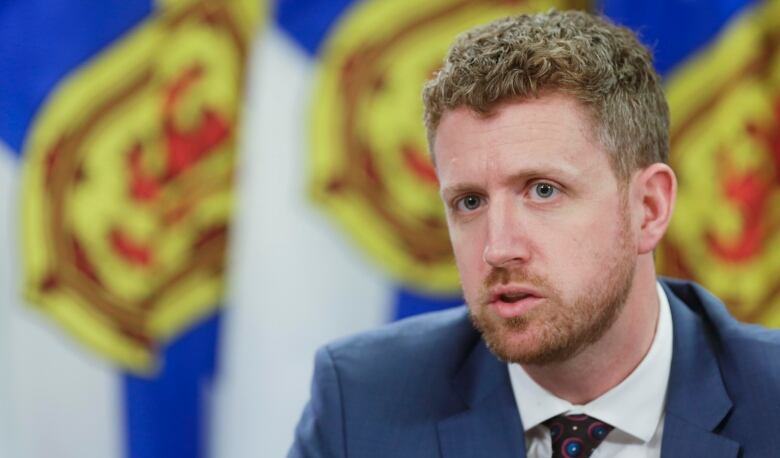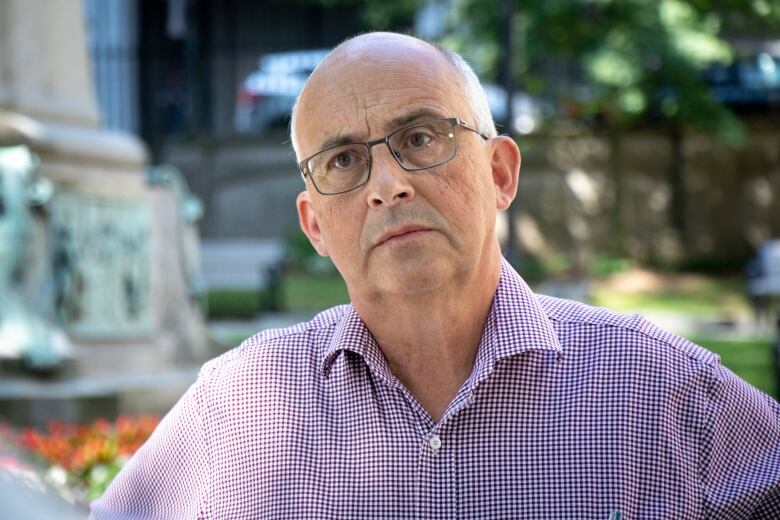Historic income assistance increase not nearly enough to close gaps, say N.S. advocates
Standard household rate to increase by $100 per adult each month beginning in May

When Bedford, N.S.,resident Ivan Herritt looks at the increase in income assistance rates announced in Thursday's provincial budget, it's not history he sees but a continued shortfall in his monthly expenses.
"It's honestly disheartening," he said.
"All that means is now I'm only $100 short on my rent every single month instead of $200 short."
The budget sees the standard household rate increase by $100 a month for every adult in a household. The increase, which will cost $35.2 million in 2021-22, is by far the largest boost in the history of the program and amounts to an increase of between 12 and 20 per cent, depending on the composition of a household.
But Herritt said it's still not enough.
He knows many people whose budgets are stretched to the max trying to cover the cost of rent.For people who can't, it usually means having to go without something else, shorting on another bill or, in some cases, having to make unsafe choices to get by.
Thursday's budget was largely complete by the time Iain Rankin became premier last month, but the increase in income assistance was something he specifically requested be added.

Rankin, who said during the Nova Scotia Liberal Party leadership campaign that rates should be higher, said the government could afford to do better.
"I think that the level of income assistance that was in place was not adequate," he told reporters at Province House.
"People that are on income assistance, disproportionately they are from minority communities and those that have different abilities. This is a way that we can help those people that are struggling right now."
Fewer clawbacks for clients
Along with the increase to income assistance, which takes effect in May,the province will stop clawing back the Canada Pension Plan disabled contributor's benefit and the CPP surviving child's benefit from income assistance calculations.
People on income assistance will also no longer be forced to sign up for the Canada Pension Plan at age 60. Signing up early meant people received a reduced pension for the rest of theirlife. The Community Services Department will now allow people to remain on assistance until age 65, when they will be eligible for their full federal pension.
NDP Leader Gary Burrill welcomed the increase, saying it is "starkly needed," but he also noted there remains a long way to go in the fight against poverty.
"Without the $100, a single parent of a single child, that family configuration, was receiving the lowest income assistance rate in all of Canada," he told reporters.
"With the $100, still the lowest in all of Canada. That's how bad the situation is."
Look to CERBasa model, says advocate
Like Burrill, Christine Saulnier of the Canadian Centre for Policy Alternatives said Nova Scotia, like other provinces, should use the federal government's Canadian emergency response benefit program as a model for helping the most vulnerable. That program paid $2,000 a month, more than double what's paid in Nova Scotia under income assistance.
"It's absolutely proof that the acceptable income level is a minimum of $2,000 a month as a safety net," she said.
Her organization had called for an increase of $300 a month.
"Surely we recognize that people who are in the deepest poverty in our province deserve a real increase, recognizing how low those income assistance rates are."

Human rights lawyer Vince Calderheadsaid there remains toogreat a gap between the poverty line and where many Nova Scotianson assistance find themselves. If the government is serious about changing that, it needs to evaluate what it will take for each of the various family scenarios, he said.
"We need to ask ourselves what's required to meet that benchmark, in order to meet the amount which the Canadian government has said a family needs," he said.
"It almost requires an expert body to look at the rates and to assess them in light of those standards."












_(720p).jpg)


 OFFICIAL HD MUSIC VIDEO.jpg)
.jpg)



























































































